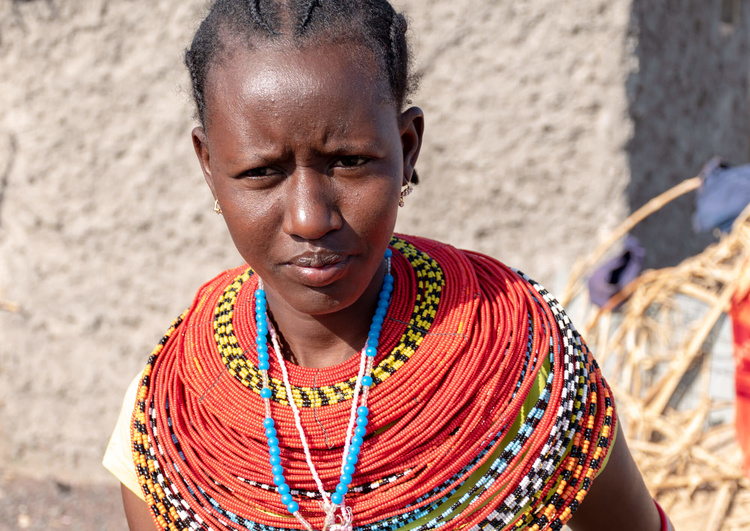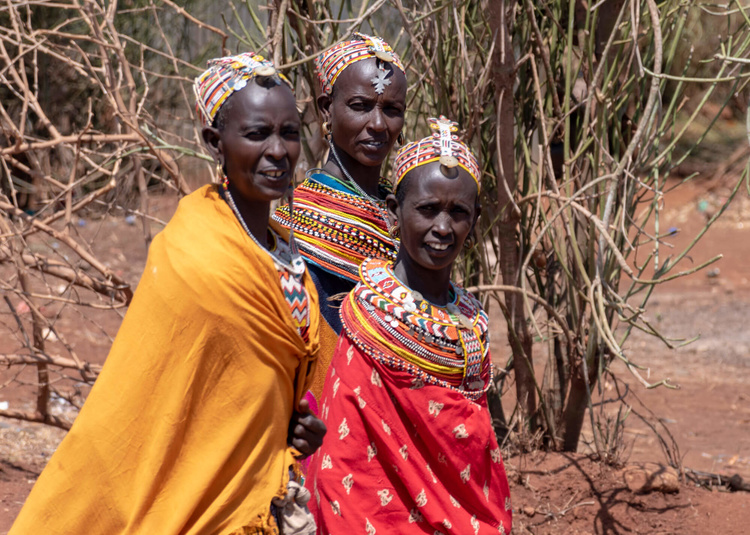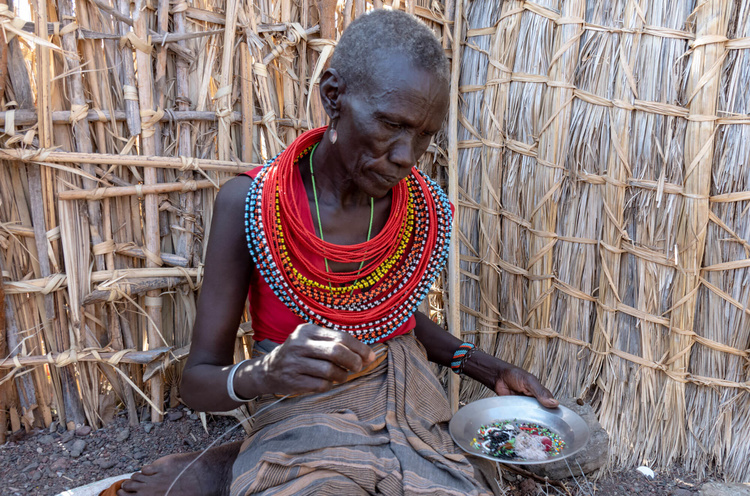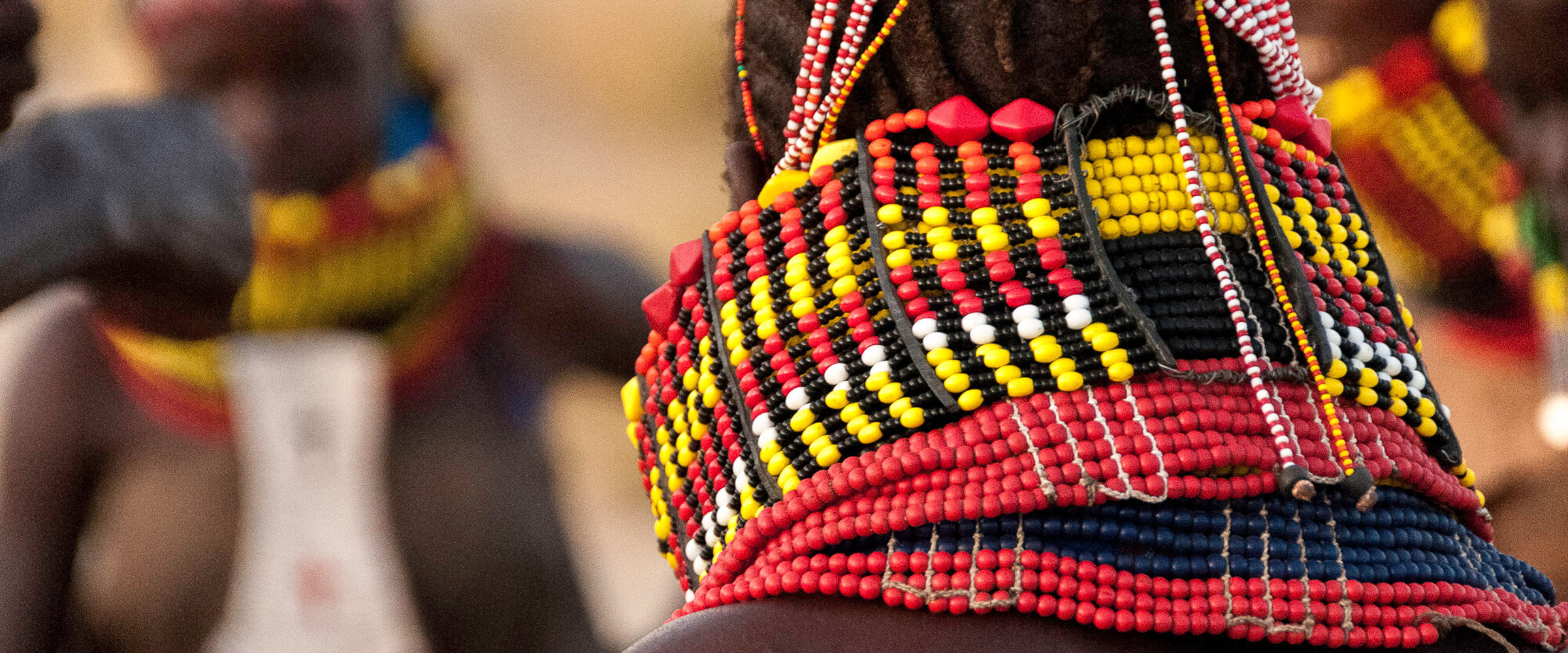All About the Samburu
The Samburu tribe lives north of the equator, in the Samburu region, northern Kenya and southeast of Lake Turkana.The Samburu people are closely related to the Maasai tribe and speak a similar language, derived from Maa.
Samburu way of life
The Samburu tribe, like the Masai tribe, is a semi-nomadic people. Cattle, goats, sheep and camels play a vital role in the Samburu lifestyle and culture. The Samburu depend heavily on their livestock for survival. Their diet consists mainly of milk and sometimes blood from their cows.
Blood is obtained by cutting the cow’s jugular slightly and draining it into a cup. The wound is then quickly closed with hot ash. Meat is only served on special occasions. The Samburu diet is also supplemented with vegetables, roots and tubers that are processed into soup.
The nomadism of the samburu
The semi-arid region of Samburu is mostly barren and barren land, and the Samburu tribe has to move around to make sure their livestock have enough food. The tribe regularly changes location to find new pastures. Huts are built with skins, mud and grass mats hanging from poles. A fence is built around the mud huts to protect them from wildlife. The Samburu tribe’s camps are called manyattas. The Samburu generally live in groups of five to ten families. Traditionally, the Samburu men tend their livestock and are also responsible for the overall safety of the tribe.

The family role
Samburu women are responsible for picking vegetables and roots, taking care of their children and fetching water. Samburu girls usually help their mothers with household chores. The Samburu are a gerontocracy, the elders leading the tribe. They decide the date of ceremonies, such as marriages and circumcisions. The entry into the life of woman and man is marked by a ceremony of circumcision. Men and women can only marry after being circumcised, because before that they are always considered as children. Once circumcised, a boy is considered a Moran (warrior). Men are divided by age groups and as a group move from one social position to another. From the child to the Moran, to the junior elder and finally to the elder.

Clothes and dance
The traditional dress of the Samburu tribe is a bright red cloth, wrapped in a skirt and white belt. The whole is adorned with earrings, bracelets, ankles and collars in colored pearls. Each piece of jewellery worn represents the status of the person wearing it.
Dance is an important part of the Samburu culture. Their dances are similar to those of the Masai, men dancing in a circle and jumping high from a standing position. Traditionally, the Samburu tribe does not use any instruments to accompany their dances and songs.
Beads among the Samburu
Samburu women are known for their incredible talent in beading. This age-old tradition is deeply rooted in the Samburu culture and plays an essential role in their identity and way of life.
The meaning of pearls in Samburu culture
Pearls are of paramount importance in the Samburu culture. They are used to creating jewellery such as necklaces, bracelets and earrings, but they also have a profound symbolic meaning. Each pearl has a special meaning and is associated with important events or life stages, such as the birth of a child, marriage or religious ritual. Pearls are passed on from generation to generation and are considered a precious heritage.

The craft of pearls in women Samburu
The craft of pearls is exclusively practiced by Samburu women. They spend hours creating complex and colorful jewelry from imported glass beads. Each piece is unique and represents the creativity and artistic skills of the Samburu women. The patterns and colours used in jewellery vary according to age, social status and the role of women in the community. Samburu women are proud of their crafts and consider these jewels as a form of artistic and cultural expression.
Pearls and women empowerment Samburu
The craft of pearls has a significant impact on the lives of Samburu women. It provides them with an independent source of income and contributes to their economic empowerment. Many Samburu women sell their jewellery at local markets, which allows them to support their families and communities.

